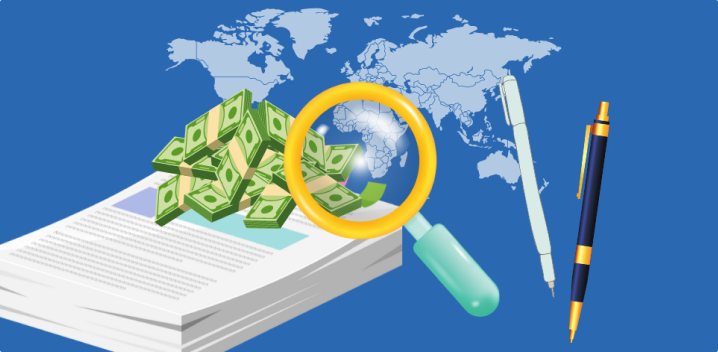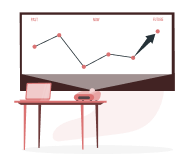Tangible Assets Vs. Intangible Assets
5paisa Research Team
Last Updated: 17 May, 2023 01:09 PM IST

Content
- Introduction
- What are Tangible Assets v/s Intangible Assets?
- Difference between tangible and intangible assets
- Calculating Tangible and Intangible Assets
- Valuation of Tangible Assets
- Valuation of Intangible Assets
- Difference between tangible and intangible benefits
- Industries that mainly use Intangible assets
- Importance of tangible and intangible resources
- Conclusion
Introduction
Both tangible and intangible assets are considered to be assets. Physical objects make up tangible assets. Land, structures, automobiles, furnishings, and equipment are some examples. A non-financial item that cannot be seen or handled is an intangible asset. Examples of tangible intangible assets include goodwill and patents.
Assets are listed as current and long-term assets (non-current assets) on the balance sheet. Any assets that the entity holds for trading and anticipates realising within a year of the reporting date are considered current assets, along with any cash that is readily available. These assets include those that the entity anticipates realising, selling, or consuming in its normal operational cycle. Every other asset is listed as a long-term asset.
While long-term assets can be either tangible or intangible, current assets are typically tangible assets.
More About Generic
- What is a Virtual Payment Address (VPA) in UPI?
- Best Swing Trading Strategies
- What Is FD Laddering?
- What Credit Score is Needed to Buy a House?
- How to Deal with Job Loss?
- Is 750 a good credit score?
- Is 700 a Good Credit Score?
- What is Impulse Buying?
- Fico Score vs Credit Score
- How to remove late payments from your credit report?
- How to Read Your Credit Card Statement?
- Does Paying Car Insurance Build Credit?
- Cashback vs Reward Points
- 5 Common Credit Card Mistakes to Avoid
- Why Did My Credit Score Drop?
- How to Read a CIBIL Report
- How Long Does It Take to Improve Credit Score?
- Days Past Due (DPD) in CIBIL Report
- CIBIL Vs Experian Vs Equifax Vs Highmark Credit Score
- 11 Common Myths about CIBIL Score
- Tactical Asset Allocation
- What is a Certified Financial Advisor?
- What is Wealth Management?
- Capital Fund
- Reserve Fund
- Market Sentiment
- Endowment Fund
- Contingency Fund
- Registrar of Companies (RoC)
- Inventory Turnover Ratio
- Floating Rate Notes
- Base rate
- Asset-Backed Securities
- Acid-test Ratio
- Participating Preference Shares
- What is Expenses Tracking?
- What is Debt Consolidation?
- Difference Between NRE & NRO
- Credit Review
- Passive Investing
- How To Get Paperless Loans?
- How To Check CIBIL Defaulter List?
- Credit Score Vs CIBIL Score
- National Bank for Agriculture and Rural Development (NABARD)
- Statutory Liquidity Ratio (SLR)
- Cash Management Bill (CMB)
- Secured Overnight Financing Rate (SOFR)
- Personal Loan Vs Business Loan
- Personal Finance
- What is Credit Market?
- Trailing Stop Loss
- Gross NPA vs Net NPA
- Bank Rate vs Repo Rate
- Operating Margin
- Gearing Ratio
- G Secs - Government Securities in India
- Per Capita Income India
- What is Term Deposit
- Receivables Turnover Ratio
- Debtors Turnover Ratio
- Takeover
- IMPS Full Form in Banking
- Redemption of Debentures
- Rule of 72
- Institutional Investor
- Capital Expenditure and Revenue Expenditure
- What is Net Income
- Assets and Liabilities
- Gross Domestic Product (GDP)
- Non-Convertible Debentures
- Cost Inflation Index
- What Is Book Value?
- What Are High Net Worth Individuals?
- Types of Fixed Deposits
- What Is Net Profit?
- What is Neo Banking?
- Financial Shenanigans
- China Plus One Strategy
- What is Bank Compliance?
- What Is Gross Margin?
- What Is an Underwriter?
- What is Yield To Maturity (YTM)?
- What is Inflation?
- Types of Risk
- What Is the Difference Between Gross Profit and Net Profit?
- What is a Commercial Paper?
- NRE Account
- NRO Account
- Recurring Deposit (RD)
- What is Fair Market Value?
- What Is Fair Value?
- What is NRI?
- The CIBIL Score Explained
- Net Working Capital
- ROI - Return on Investment
- What Causes Inflation?
- What is Corporate Action?
- What is SEBI?
- Fund Flow Statement
- Interest Coverage Ratio
- Tangible Assets Vs. Intangible Assets
- Current Liabilities
- Current Ratio Explained - Examples, Analysis, and Calculations
- Restricted Stock Units (RSU)
- Liquidity Ratio
- Treasury Bills
- Capital Expenditure
- Non-Performing Assets (NPA)
- What is a UPI ID? Read More
Disclaimer: Investment in securities market are subject to market risks, read all the related documents carefully before investing. For detailed disclaimer please Click here.
Frequently Asked Questions
Tangible costs are predictable or foreseeable costs. For example, the employee salary, operational expenses, etc. Intangible costs are specific values assigned to quantify the effect of a situation or scenario. For example, a reduction in employee morale or customer dissatisfaction.
Intangible result refers to a result without a monetary value since it would be worthless and challenge the accuracy of results.
In this respect, businesses use two basic accounting ratios: current and quick ratios.
1. Tangible assets have physical existence.
2. These assets lose value over time or depreciate. However, these assets have a scrap value.
3. Companies may use tangible assets for regular business operations or as collateral for loans.
A company's assets are a sum of its liabilities and shareholders' funds.
1. Intangible assets lack any physical existence.
2. These assets do not lose value over time or depreciate. Moreover, the scrap value for these assets is zero.
3. Even though intangible assets are riskier than tangible assets, it creates potential value for a firm.
4. It is challenging to trade in intangible assets compared to tangible assets.


